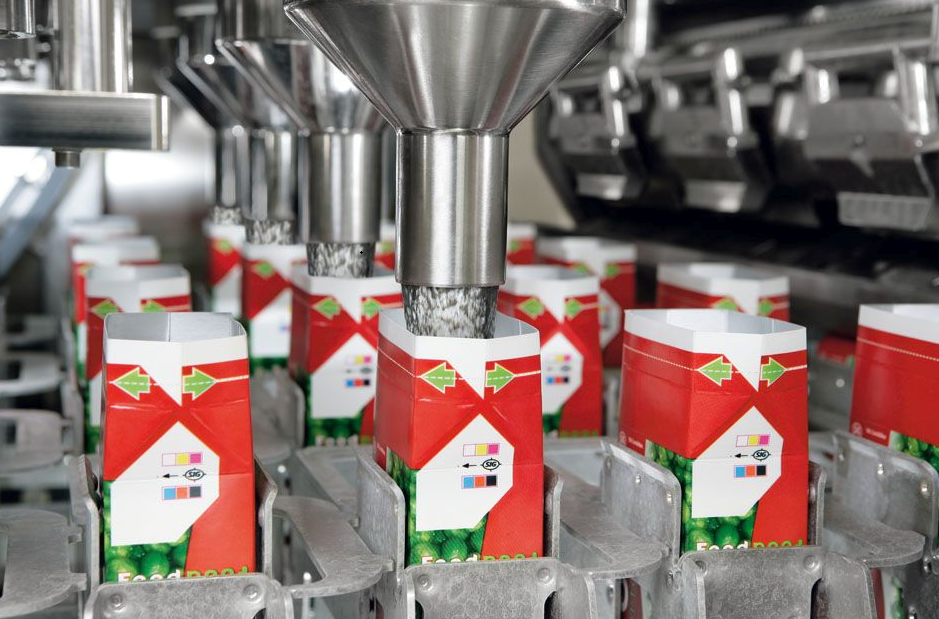Making the best use of in-house resources:
Outsourcing non-production-related business processes is part of everyday life for many industrial companies. The area of technical documentation is a specific focus for management. In view of increasing regulatory requirements and the generally growing importance of user information, companies are often faced with the following question:
Does it make sense to build up the missing staff and technical capacities in this area internally, or would it be better to purchase these services externally? Thanks to tried-and-true cooperation models, targeted documentation outsourcing has become a real success factor for more and more companies.
How does successful business process outsourcing work in day-to-day practice?
With over 5,000 employees, SIG Combibloc GmbH is one of the leading system and solution providers for aseptic packaging. For the past eight years, we've been supporting SIG in the creation, management and distribution of their technical documentation. Together with Dirk Noske, Head of the Documentation Department at SIG, we take a closer look at the key aspects of the collaboration.
What are your reasons for outsourcing technical writing?
"It was a rather difficult situation." This is how Dirk Noske describes the initial situation within his department with regard to the technical writing workflow. There was a specific need for optimisation from a technology point of view. Back at that time, the documentation was still being created and managed by using a conventional technical authoring tool. In conjunction with decentralised data management, the system was no longer powerful enough to handle the extensive documentation tasks in the best possible way. Support was also needed in terms of personnel for the SIG team, which was too small back then. What was the main reason for not simply covering the personnel requirements by hiring new staff members?
In general, project workloads in the Technical Editorial department fluctuate greatly. This makes strategically-sensitive personnel planning difficult and, with an exclusively internally-staffed Technical Editorial team, it can quickly lead to either overload or underload situations for employees. For Dirk Noske, it was therefore clear that additional people-power and a new system should be provided by a service provider.
What challenges are associated with outsourcing?
New team, new process: Especially at the start of outsourcing, the cooperation partners have to get used to each other. For Dirk Noske, it was clear from day one that transparency and openness are crucial for a stable collaboration:
"In the end, the service provider should act like an internal department... with complete trust."
Thanks to clearly defined responsibilities and a clear communication strategy, the kothes team was able to integrate itself confidently into the SIG corporate landscape. It was essential to have respectful and honest interactions between all process participants in every phase of the cooperation.
From a technical perspective, the collaboration was initially dominated by the implementation of a new IT system landscape. Particularly challenging: All documentation data first had to be migrated from the existing system into the new XML-based Content Management System . A clever methodical approach was particularly important here: On one hand, it was important to keep the workload of the data migration, which took place in parallel with the day-to-day technical editorial business, within reasonable limits. On the other hand, it was imperative to structure the content and transfer it into the new system in sensible module sizes or "chunks".
What steps and methods are helpful in implementing the outsourcing process?
Outsourcing is a complex process in which both internal and external partners must harmonise their efforts into a new workflow. To this end, it's important that it is clear to both sides at all times:
- Which departments and individuals are involved on both the manufacturer and service provider sides?
- How are the individual competencies in the documentation process assigned to the individual process partners?
- How is the flow of information between the contact people assured?
In order to document all the specifications for the Technical Writing processes and responsibilities in a central location, we developed an editorial guideline, together with the SIG team. From process design and graphics creation to specific wording requirements, all the essential aspects of technical documentation were laid down in detail in these guidelines. Over the course of the collaboration, these "rules of engagement" have grown to a considerable 450 pages and the guideline has established itself in editorial practice as a central standardisation tool for consistent technical documentation work. A decisive advantage: When new employees are being trained, the guidelines serve as a reliable guide to SIG-specific processes and structures. In this way, a high level of efficiency and quality can be achieved, even in a dynamic Technical Editorial environment with changing role players.
In what respects does the manufacturer particularly benefit from outsourcing?
"You can ultimately concentrate on your core competencies; this isn't the creation of documentation. It's the development — the building of new machines."
With these words, Dirk Noske concisely sums up what he sees as the greatest advantage of outsourcing technial writing. From a manufacturer's perspective, outsourcing secondary business processes in a targeted manner and making the best possible use of in-house resources is worthwhile in several respects:
- Staff's capacities and infrastructures don't necessarily have to be built up in-house, and at a great cost.
- The outsourced process can continue at scale without a problem: The manufacturer can call up exactly the services that are needed at the time without having to permanently reserve resources.
- The outsourced tasks are in the hands of experts who are specifically trained for their field of activity. This ensures quality and creates security for the manufacturer, especially with regard to the conformity of technical documentation with directives and standards.
Dirk Noske particularly appreciates the fact that expert knowledge on a wide range of subjects is available on-demand within the world of technical documentation. Whether it's a matter of detailed questions about the Risk Assessment of a machine or the complete handling of the translation process, for example, the competencies in the individual sub-areas of the documentation process are bundled at kothes and don't have to be labouriously requested and coordinated by the manufacturer through various providers.
What prospects for cooperation does the future hold?
"I'd like the documentation to be a little more exciting," says Dirk Noske with a smile. Exploiting the potential of current and future technology trends: For the person in charge of technical documentation , this is especially important with regard to new forms of information delivery. One thing is for sure: digital and cross-media content will continue to gain importance as an alternative to traditional print-based documentation. In any case, it's worthwhile for companies to prepare for the coming developments in advance. Cooperation with a documentation service provider can prove to be a recipe for success: The external partner offers access to future technologies and competencies; the internal development of which would be both very lengthy and costly for manufacturers.
Conclusion
Lean processes and increased output quality:
For manufacturers, outsourcing in the field of technical documentation is associated with several advantages. Which specific outsourcing strategy leads to success depends, of course, on the specific framework conditions of each company. As a general rule, the key to a long-term partnership between manufacturer and service provider is a clearly defined competence and authority model. This makes it clear (at all times) which responsibilities lie with the service provider and which remain with the manufacturer, or which responsibilities are shared between both partners.
It's important to note that the assignment of tasks and competencies is not a rigid structure, but can be dynamically adapted to the process conditions over the course of the collaboration. Often, it's key competencies such as quality monitoring that the manufacturer prefers to keep under its own responsibility at the start of the outsourcing. As the cooperation progresses, the realisation matures that the service provider can also better control this area, thanks to bundled technical expertise. In this manner, it's possible that additional competencies will switch from the manufacturer to the service provider over time.


